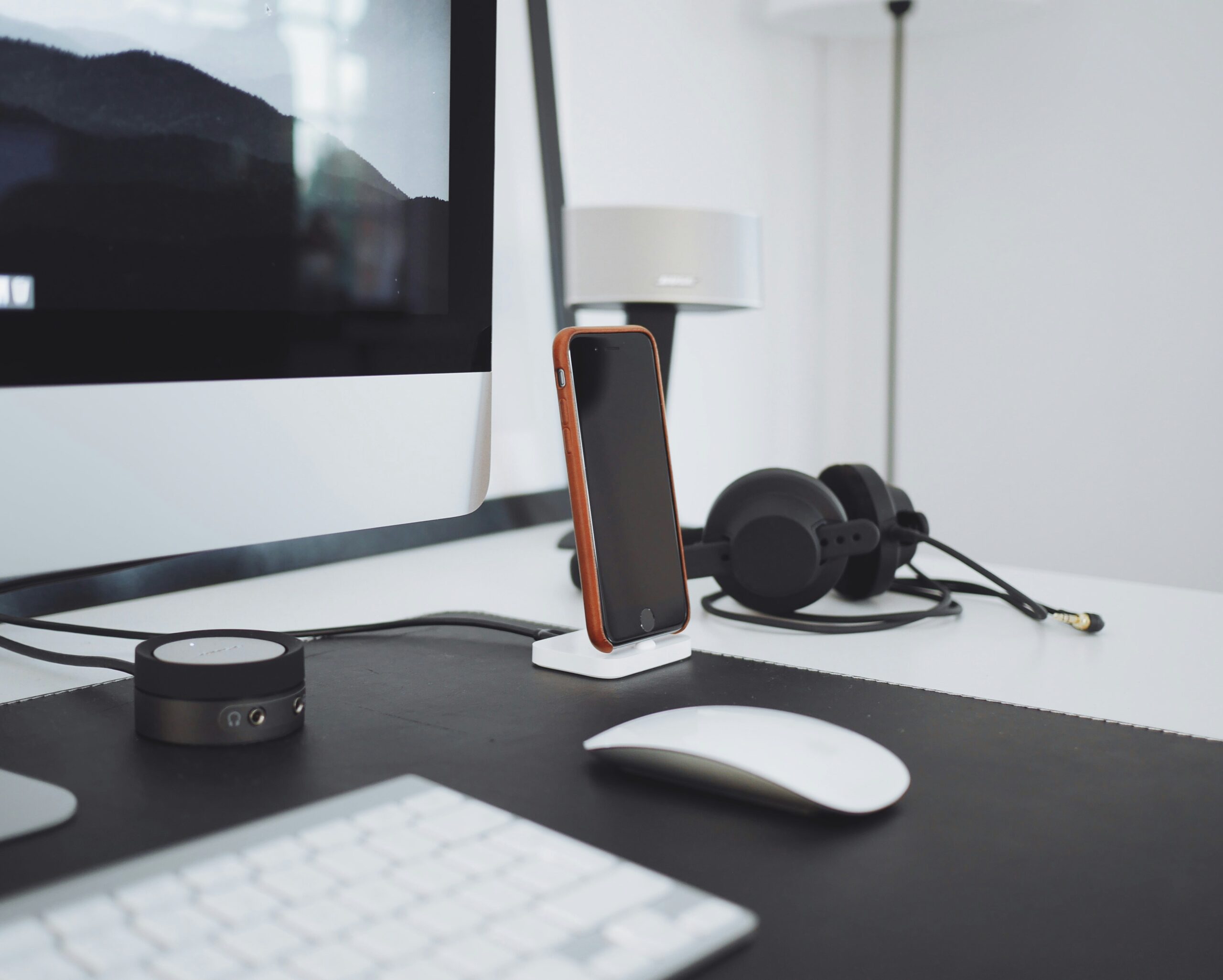Your keyboard and mouse are essential components of your computer setup, and they often bear the brunt of daily usage. Over time, they accumulate dust, grime, and bacteria, which can affect their performance and hygiene. Cleaning these peripherals not only extends their lifespan but also ensures a healthier work environment. This guide will provide detailed instructions on how to clean your keyboard and mouse, followed by a section addressing frequently asked questions.
Why Cleaning is Important
Before diving into the cleaning process, it’s important to understand why maintaining cleanliness is crucial:
- Hygiene: Keyboards and mice can harbor harmful bacteria and germs, especially if they are shared among multiple users. Regular cleaning helps prevent the spread of illnesses.
- Performance: Dirt and debris can interfere with the functionality of keys and buttons, leading to poor performance and frustrating user experiences.
- Aesthetics: A clean keyboard and mouse look more professional and pleasant, enhancing your workspace’s overall appearance.
- Longevity: Keeping your peripherals clean can extend their life by preventing damage from accumulated dirt and grime.
Tools and Materials Needed
Before you start, gather the following tools and materials:
- Microfiber cloths: These are gentle on surfaces and effective at trapping dust and dirt.
- Compressed air can: Useful for blowing out dust and debris from hard-to-reach areas.
- Isopropyl alcohol (70% or higher): An effective disinfectant that evaporates quickly without leaving residue.
- Cotton swabs: Ideal for cleaning tight spaces.
- Soft-bristled brush: Helps dislodge dirt from between keys.
- Dish soap and water: For a more thorough cleaning of removable parts.
- Small container: To hold soapy water for cleaning keycaps.
- Vacuum cleaner with a brush attachment: For removing dust and debris.
- Toothpicks: Useful for removing stubborn dirt from crevices.
Step-by-Step Guide How To Clean Your Keyboard And Mouse
1. Preparation
Turn off your computer and unplug the keyboard: This prevents any accidental key presses and ensures safety.
Take a photo of your keyboard layout: If you plan to remove the keycaps for a thorough cleaning, a reference photo will help you reassemble the keyboard correctly.
2. Initial Cleaning
Shake out loose debris: Turn the keyboard upside down and gently shake it to dislodge any loose crumbs and debris. You can also tap it lightly on the back.
Use compressed air: Hold the can of compressed air upright and spray short bursts between the keys. This will blow out dust and small particles.
Vacuum the keyboard: Use a vacuum cleaner with a brush attachment to remove remaining dust and debris. Be gentle to avoid damaging the keys.
3. Cleaning the Surface
Wipe with a microfiber cloth: Dampen a microfiber cloth with a small amount of water or isopropyl alcohol. Wipe down the surface of the keyboard, paying attention to the spaces between keys. Avoid using too much liquid to prevent damage.
4. Deep Cleaning
Remove keycaps (if possible): If your keyboard has removable keycaps, use a keycap puller or a flat tool to gently pry them off. Place the keycaps in a small container filled with warm, soapy water. Let them soak for a few minutes.
Clean the keycaps: Use a soft-bristled brush or an old toothbrush to scrub the keycaps. Rinse them thoroughly with clean water and let them dry completely on a towel.
Clean the keyboard base: While the keycaps are drying, use a cotton swab dipped in isopropyl alcohol to clean the spaces between the keys. Be thorough but gentle to avoid damaging the switches.
5. Reassembly
Reattach the keycaps: Once the keycaps are completely dry, use your reference photo to reattach them to the keyboard. Press them firmly until they click into place.
6. Final Touch
Wipe down the keyboard again: Give the keyboard a final wipe with a clean, dry microfiber cloth to remove any remaining dust or fingerprints.
Step-by-Step Guide to Cleaning Your Mouse
1. Preparation
Turn off your computer and unplug the mouse: This ensures safety and prevents accidental inputs during cleaning.
2. Initial Cleaning
Wipe the exterior: Use a microfiber cloth dampened with a small amount of water or isopropyl alcohol to wipe down the exterior of the mouse. Pay attention to the areas around the buttons and scroll wheel.
3. Cleaning the Scroll Wheel
Use a cotton swab: Dip a cotton swab in isopropyl alcohol and gently clean around the scroll wheel. Rotate the wheel to clean all sides.
4. Cleaning the Sensor
Clean the sensor lens: If your mouse has an optical or laser sensor, use a dry cotton swab to gently clean the lens. Avoid using liquids on the sensor.
5. Deep Cleaning
Disassemble the mouse (if possible): Some mice allow for disassembly for thorough cleaning. Follow the manufacturer’s instructions if applicable. Be cautious and avoid losing any small parts.
Clean the interior: Use compressed air to blow out any dust and debris from the interior of the mouse. Use a cotton swab with isopropyl alcohol to clean internal components if necessary.
6. Reassembly
Reassemble the mouse: If you disassembled the mouse, carefully reassemble it according to the manufacturer’s instructions.
7. Final Touch
Wipe down the mouse again: Give the mouse a final wipe with a clean, dry microfiber cloth to remove any remaining dust or fingerprints.
How to do a deep clean for a mechanical keyboard
For a deeper clean of mechanical keyboards, follow these steps to ensure every part is thoroughly cleansed and maintained:
1. Preparation
Unplug the keyboard: Disconnect your keyboard from your computer to ensure safety.
Take a photo: Capture a reference photo of your keyboard layout to aid in reassembly.
2. Remove Keycaps
Use a keycap puller: Gently pull off each keycap using a keycap puller or a flat tool. Place the keycaps in a container.
3. Clean Keycaps
Soak in soapy water: Immerse the keycaps in a container filled with warm water and a few drops of dish soap. Let them soak for about 15-30 minutes.
Scrub keycaps: Use a soft-bristled brush or an old toothbrush to scrub each keycap. Rinse them thoroughly with clean water and lay them out on a towel to dry completely.
4. Clean Keyboard Base
Blow out debris: Use compressed air to blow out dust and debris from the keyboard base. Pay attention to the spaces around the switches.
Clean with alcohol: Use a cotton swab dipped in isopropyl alcohol (70% or higher) to clean the surface and around the switches. Be gentle to avoid damaging the components.
5. Reassemble
Ensure keycaps are dry: Once the keycaps are completely dry, reattach them according to your reference photo, pressing firmly until they click into place.
6. Final Wipe
Final wipe: Give the entire keyboard a final wipe with a clean, dry microfiber cloth to remove any remaining dust or fingerprints.
By following these steps, your mechanical keyboard will be thoroughly cleaned, enhancing both its performance and longevity.
Frequently Asked Questions How To Clean Your Keyboard And Mouse
How often should I clean my keyboard and mouse?
It depends on usage and environment. For general use, a monthly cleaning is recommended. If you eat at your desk or have pets, consider cleaning them more frequently.
Can I use disinfectant wipes to clean my keyboard and mouse?
Yes, disinfectant wipes can be used. Ensure they are not too wet and avoid getting liquid into the keyboard or mouse. Use wipes that contain isopropyl alcohol for effective disinfection.
What should I do if I spill liquid on my keyboard?
Immediately turn off your computer and unplug the keyboard. Turn the keyboard upside down to drain the liquid. Remove the keycaps if possible and clean them. Let the keyboard dry completely before reconnecting it. In severe cases, you might need to replace the keyboard.
Can I put my keyboard in the dishwasher?
No, putting your keyboard in the dishwasher can damage it. It’s best to clean it manually using the methods described above.
How do I clean a mechanical keyboard?
Cleaning a mechanical keyboard follows similar steps to a regular keyboard. Removing keycaps is easier with mechanical keyboards, allowing for a more thorough cleaning. Ensure you dry the keycaps completely before reattaching them.
Is it safe to use a vacuum cleaner on my keyboard and mouse?
Yes, but use a vacuum with a brush attachment and be gentle to avoid damaging the components. Compressed air is generally safer and more effective for removing dust and debris.
Can I use water to clean my keyboard and mouse?
Use water sparingly and always with a cloth or cotton swab. Avoid soaking the keyboard or mouse in water. Isopropyl alcohol is preferred as it evaporates quickly and disinfects effectively.
What should I do if my mouse buttons are sticky?
Clean around the buttons with a cotton swab dipped in isopropyl alcohol. If the problem persists, you may need to disassemble the mouse and clean the internal components.
How do I prevent my keyboard and mouse from getting dirty?
Regularly wash your hands before using your computer, avoid eating at your desk, and cover your keyboard when not in use. Using a mouse pad can also help keep the mouse clean.
Can I use a hairdryer to dry my keyboard?
A10: It’s not recommended to use a hairdryer as the heat can damage the keyboard. Allow the keyboard to air dry naturally or use a fan to speed up the process.
What type of alcohol is best for cleaning?
Isopropyl alcohol (70% or higher) is ideal for cleaning keyboards and mice. It effectively disinfects and evaporates quickly without leaving residue.
How do I clean a wireless keyboard and mouse?
Follow the same cleaning steps as for wired devices. Ensure you remove the batteries before cleaning to prevent any electrical issues.
Can I use soap and water to clean my keycaps?
Yes, soaking keycaps in warm, soapy water is effective. Ensure they are thoroughly rinsed and completely dry before reattaching them to the keyboard.
What should I do if my keyboard has a non-removable keycap design?
Clean the keyboard as thoroughly as possible without removing the keycaps. Use compressed air, a soft-bristled brush, and cotton swabs to reach between the keys.
How do I clean a gaming keyboard and mouse?
Gaming keyboards and mice often have more intricate designs but can be cleaned using the same methods. Pay special attention to any additional buttons or features.
Is it necessary to clean the underside of the mouse?
Yes, the underside of the mouse can accumulate dirt and dust, which can affect its movement. Use a microfiber cloth and isopropyl alcohol to clean the underside, including the sensor area.
How do I clean a keyboard with built-in lighting?
Clean a backlit keyboard carefully to avoid damaging the lighting. Use a microfiber cloth dampened with isopropyl alcohol and avoid using excessive liquid.
What is the best way to store a keyboard and mouse when not in use?
Store them in a clean, dry place. Covering the keyboard with a dust cover and placing the mouse in a protective case can help keep them clean.
Can I use vinegar to clean my keyboard and mouse?
Vinegar can be used as a mild cleaning solution, but isopropyl alcohol is preferred due to its disinfectant properties and quick evaporation.
How do I clean the cable of my wired keyboard and mouse?
Wipe the cable with a microfiber cloth dampened with isopropyl alcohol. Be gentle to avoid damaging the insulation.
Can I clean my keyboard and mouse with baby wipes?
Baby wipes can be used for surface cleaning, but ensure they are not too wet. Isopropyl alcohol wipes are more effective for disinfection.
What should I do if my keyboard keys are not functioning after cleaning?
Ensure the keyboard is completely dry. Reconnect it and test the keys. If they still do not function, there may be internal damage, and you might need to replace the keyboard.


